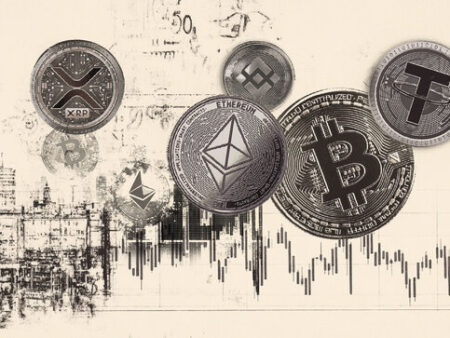Dogecoin Leads Meme Coin Retreat Amid Risk-Off Sentiment
Dogecoin (DOGE) is currently leading the retreat of meme coins, trading at $0.2251 on Friday. This decline reflects a growing risk-averse sentiment in the cryptocurrency market after a three-week recovery that pushed the total market capitalization above $4 trillion.
If the selling pressure continues, DOGE could fall below a recently broken descending trendline resistance and retest a strong support level around the $0.2000 zone, where several moving averages converge on the daily chart.
Altcoin Season Stalls, Dogecoin’s Bullish Momentum Fades
The recent altcoin rally saw the Altcoin Season Index peak at 59 before declining to 45. Altcoin season is defined as a 90-day period when cryptocurrencies other than Bitcoin (BTC), such as Ethereum (ETH), Ripple (XRP), and Dogecoin (DOGE), outperform BTC.
A reading above 75 on the index signals the start of altcoin season. The coming weeks will be crucial in determining the market’s direction and whether altcoins are poised for a rally, indicating a capital rotation away from Bitcoin.
Technical Outlook: What’s Next for Dogecoin?
Dogecoin’s price remains above the support provided by a recently broken descending trendline. However, the technical structure suggests a bearish bias. The Relative Strength Index (RSI) is falling towards the midline after reaching a high of 85 during the rally to a five-month high of $0.2873.
A continued decline in the RSI below the midline would signal increasing bearish momentum amid a significant reduction in speculative demand. The Moving Average Convergence Divergence (MACD) is nearing a sell signal. Traders may reduce their exposure if the MACD blue line crosses below the red signal line.
Should the price fall below the descending trendline, the 200-day Exponential Moving Average (EMA), the 100-day EMA, and the 50-day EMA, clustered between $0.1996 and $0.2064, would act as support to prevent a further decline towards the June lows of $0.1429.
However, traders should temper their bullish expectations, especially given that the Spot Volume Bubble Map remains neutral.
A neutral reading suggests that trading volume is decreasing and not overheated. Therefore, if Dogecoin stabilizes, a recovery could occur, potentially driving the bullish trend towards key levels, such as the year-to-date high of $0.4331.
Cryptocurrency Metrics – Frequently Asked Questions
The total number of tokens that can be created for each cryptocurrency is determined by the developer or creator. Only a certain number of these assets can be created through mining, staking, or other methods. This is determined by the algorithm of the underlying blockchain technology. Since its creation, a total of 19,445,656 BTC have been created, which is the circulating supply of Bitcoin. On the other hand, the circulating supply can also decrease through actions such as token burning or accidentally sending assets to addresses of other incompatible blockchains.
Market capitalization is the result of multiplying the circulating supply of a particular asset by its current market value. In the case of Bitcoin, the market capitalization in early August 2023 is over $570 billion, which is the result of the more than 19 million BTC in circulation multiplied by the price of Bitcoin, which is around $29,600.
Trading volume refers to the total number of tokens of a specific asset that have been traded or exchanged between buyers and sellers within a set trading schedule, such as 24 hours. It is used to measure market sentiment. This metric combines all volumes from centralized and decentralized exchanges. Increased trading volume often indicates demand for a particular asset, as more people are buying and selling the cryptocurrency.
The funding rate is a concept designed to encourage traders to take positions and ensure that the prices of perpetual contracts match those of spot markets. It defines a mechanism for exchanges to ensure that future prices and periodic price payments converge regularly. When the funding rate is positive, the price of the perpetual contract is higher than the market price. This means that traders who are bullish and have opened long positions pay traders who are in short positions. Conversely, a negative funding rate means that the prices of perpetual contracts are lower than the reference price, so traders with short positions pay traders who have opened long positions.
Stay ahead of the curve in the fast-paced crypto world – explore the latest updates and trends at Cryptonewsfeeds.com.










